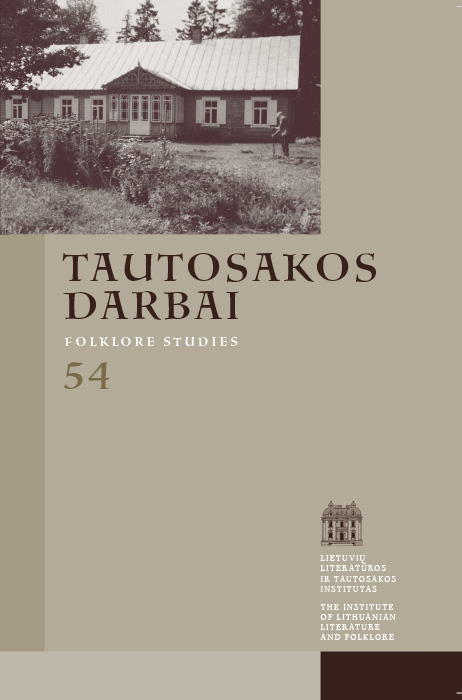Lietuviškos kanapės tradiciškumo klausimas: tarpdalykinė analizė
Santrauka
Objektas. Sėjamosios kanapės (Cannabis sativa L., var. C. ruderalis) auginimo ir naudojimo tradicija Lietuvoje nuo seniausių laikų iki XXI amžiaus.
Tikslas. Retrospektyviai apžvelgti su Lietuvoje augančių sėjamųjų kanapių tradiciškumo klausimu susijusius archeologinius, botaninius, istorinius ir etnografinius duomenis, gretinant juos su XIX–XXI a. pluoštinėms kultūroms skirtų etnografinių ir XXI a. pirmojoje pusėje autoriaus atliekamų etnomedicininių lauko tyrimų rezultatais. Publikacijoje nesiekiama išsamiai aprašyti tradicinių ūkinio, etnomedicininio ar apeiginio kanapės naudojimo praktikų (šie aspektai nagrinėjami kitose spaudai rengiamo rašinių ciklo dalyse). Dėmesys skiriamas išimtinai kanapės tradiciškumo Lietuvos kultūroje klausimui.
Problematika ir naujumas. Lietuvoje stiprėja vieša diskusija dėl sėjamosios kanapės rūšių (spaudoje ir internete dažnai jos skirstomos į pluoštinę, arba techninę, ir narkotinę, arba medicininę) dekriminalizavimo, bet aiškiai trūksta šalies mokslininkų dėmesio šio augalo problematikai. Autoriaus turimomis žiniomis, ši publikacija – pirmasis tokios apimties specialiai kanapei skirtas etnologinis tyrimas Lietuvoje. Tiek kanapės auginimu, tiek jos griežta kontrole suinteresuotų asmenų retorikoje dažnai girdėti visuomenę klaidinančių subjektyvių, politiškai angažuotų ar elementaraus neišprusimo ir nežinojimo paskatintų teiginių. Straipsnio autorius siekia kiek galima objektyviau įvertinti problemą, o diskusiją apie itin svarbų mūsų tradicinės kultūros ir ekonomikos objektą – sėjamąją kanapę – praturtinti naujais faktais.
